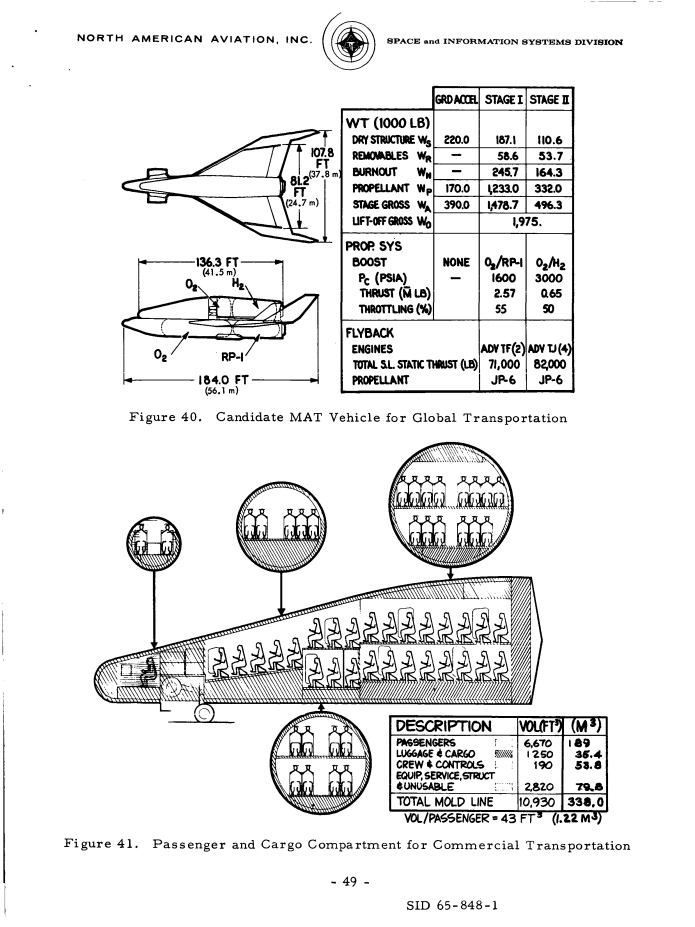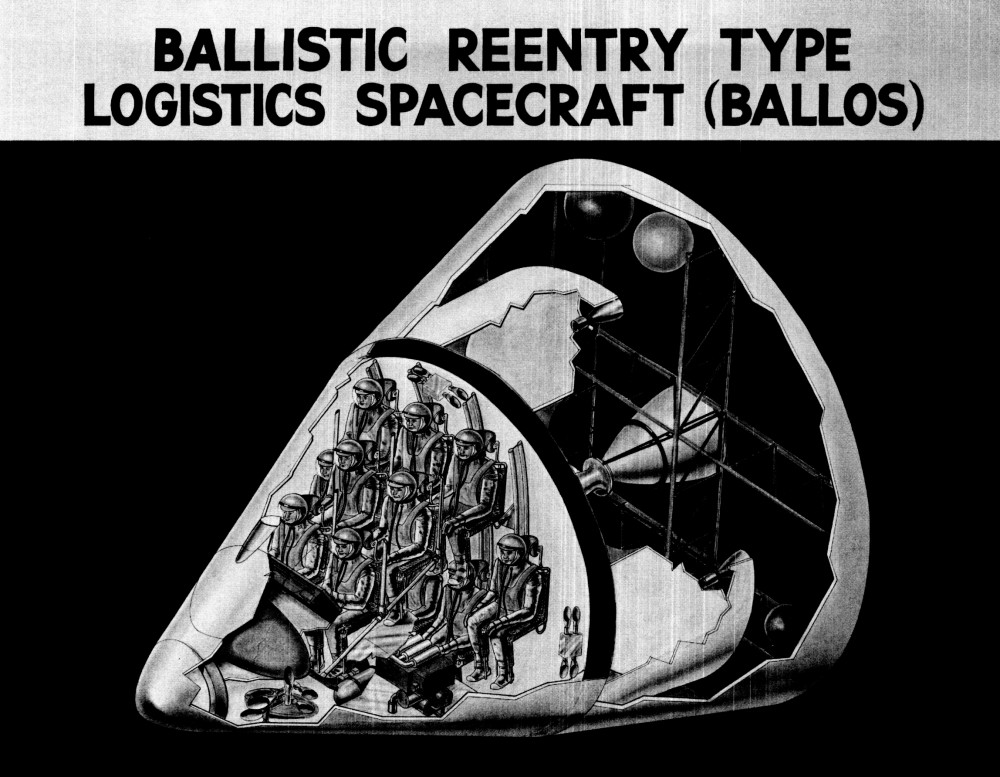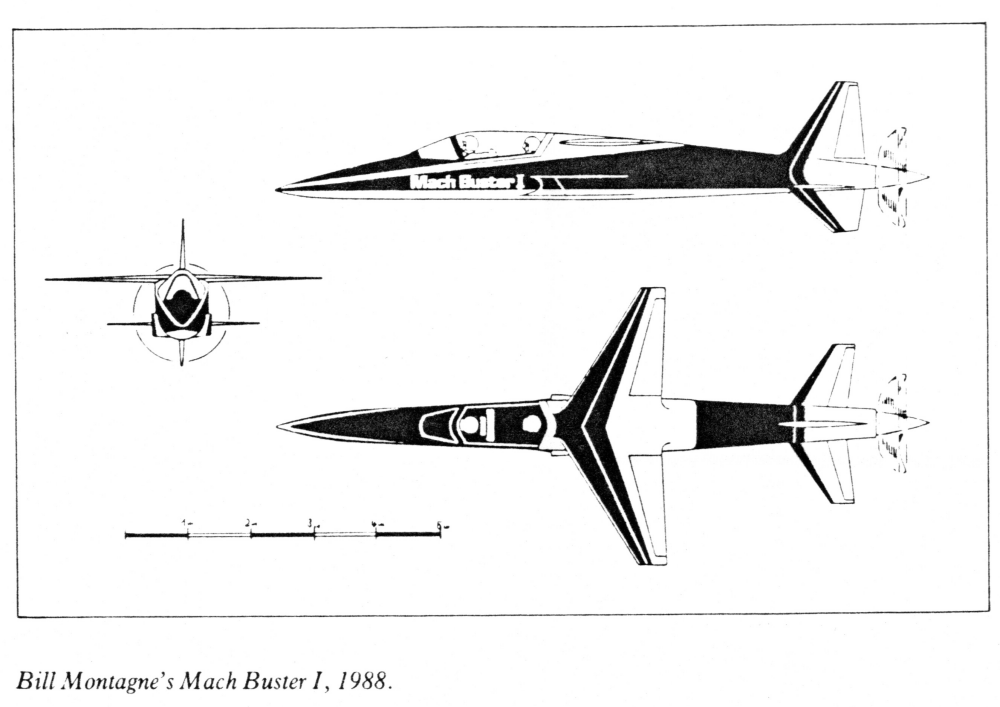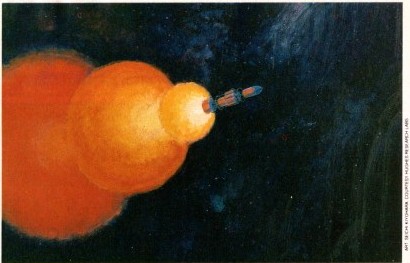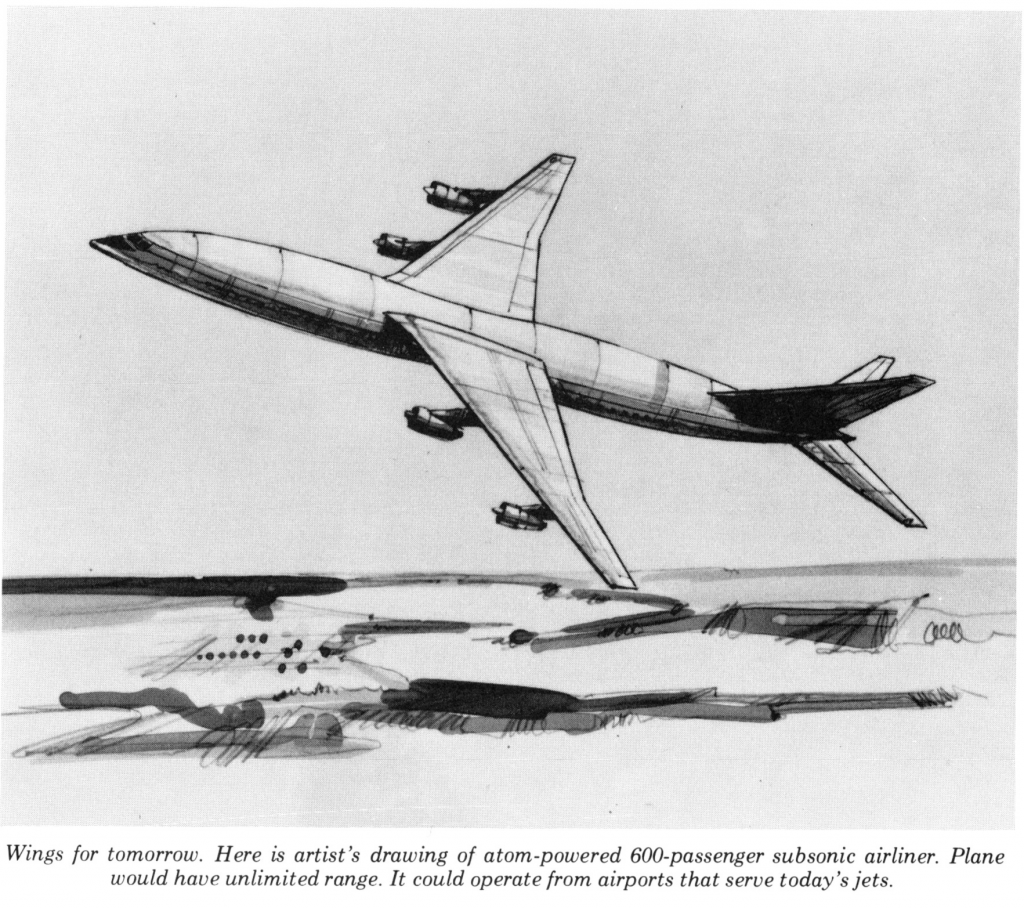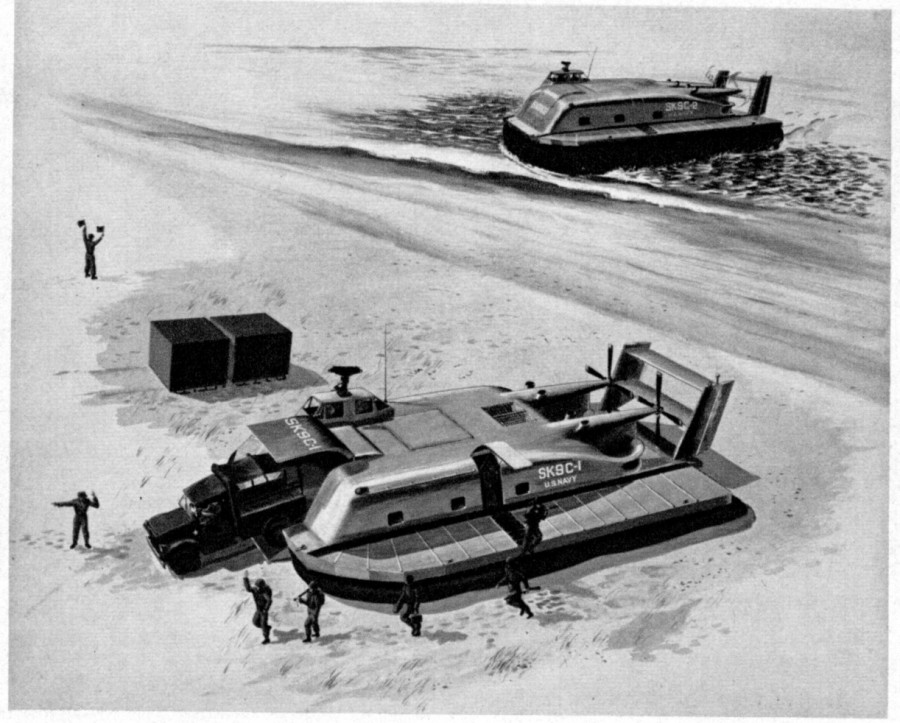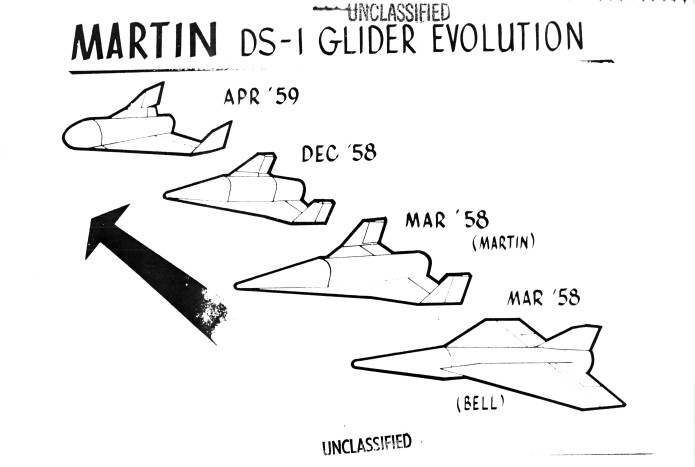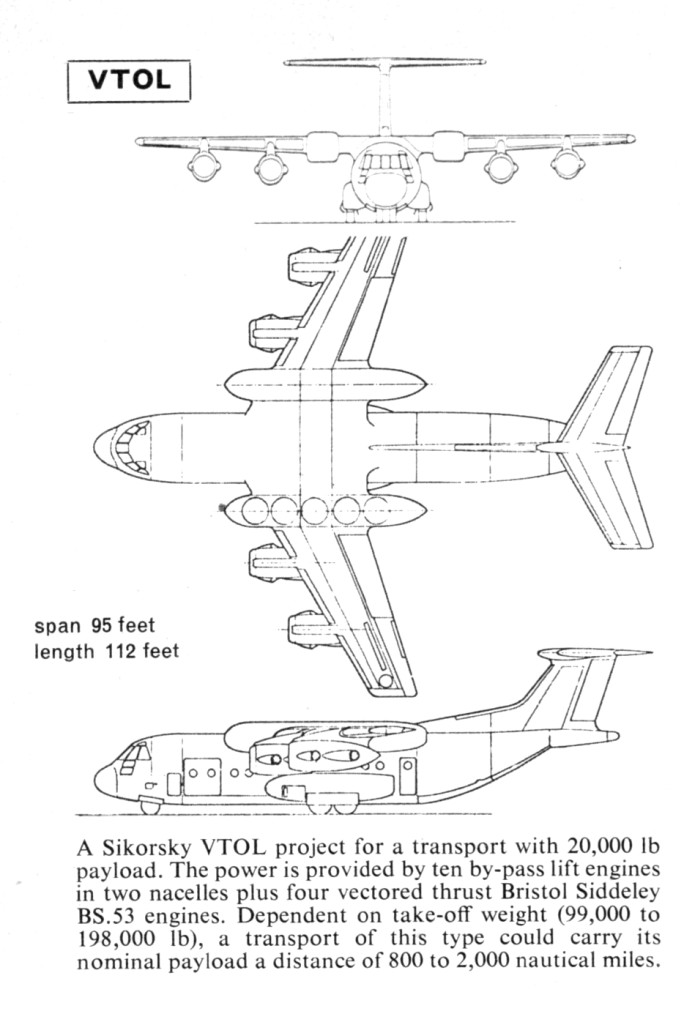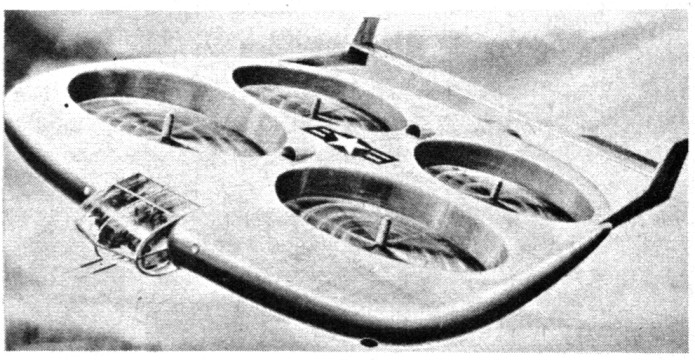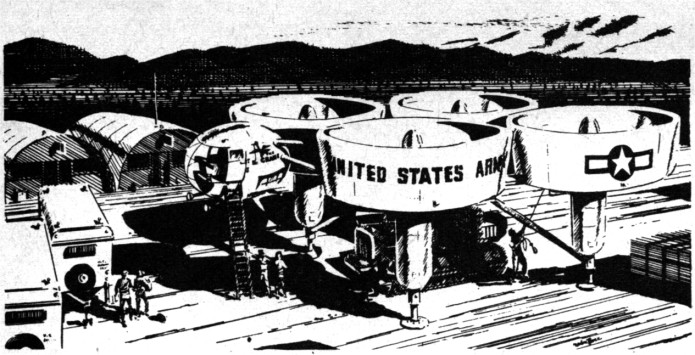In 1965 North American Aviation produced a study for NASA about reusable space launch vehicles to support forthcoming expected space stations. Included within that study was an alternate use of rocket vehicles… point-to-point hypersonic commercial passenger transportation. This concept goes back to the late 1940’s and has continued to the present day, with the Elon Musk suggesting that the SpaceX Starship could be used for that purpose. The idea is interesting and it certainly *could* work. But could it be commercially cost effective? History with craft such as the Concorde and the Shuttle argue strongly against an early vehicle like this doing anything but losing truckloads of cash every time it launches.
Artwork circa 1964 depicting the Lockheed BALlistic LOgistics Spacecraft (BALLOS), a sort of super-sized Apollo capsule meant for the transportation of a dozen astronauts (10 passengers, 2 crew) at once to and from any one of the doubtless dozens of space stations that the United States would surely have in orbit by the mid 1970’s. Launch vehicle would be a Saturn Ib.
The “Mach Buster” was an unfinished amateur-built prop plane that was optimistically planned (in the late 1980’s) to exceed the speed of sound. Sadly, I’ve long since lost the reference for where the below image came from, existing in my collection solely as a single photocopy.
A brief article on the Mach Buster was in the August, 1989, issue of Popular Mechanics.
A piece of art from Hughes Research Labs from the late 70’s depicting an Orion nuclear pulse vehicle in flight. Sadly low rez, but whatareyagonnado.
It’s an interesting piece, but it seems likely to be quite inaccurate. in deep space when the system operates in a pretty hard vacuum, the fireballs resulting from each blast would expand outwards at a speed of many hundreds or thousands of kilometers per second.
The heyday of the “atomic powered airplane” was the late 50’s-early 60’s. By the mid ’60’s it was done. But there was a brief, kinda sad and halfhearted revival in the seventies when the price of fuel spiked. An atomic airplane would be able to fly without all that pesky and overpriced petroleum; it could fly without producing pollution; and it could fly really, really far. Whether it could fly without irradiating the passengers, and whether it could fly at all, are questions largely left unanswered. The art below depicts a Lockheed concept for an atomic jetliner. It has the wasp-waisted configuration favored in the ’70’s for transonic jetliner designs, but where the reactor was supposed to go is not clear. *Presumably* it was to be fitted in the fuselage under the wings, as that’s the only place where no passenger windows are visible.
